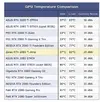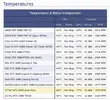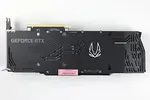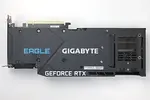- Messaggi
- 26,930
- Reazioni
- 14,681
- Punteggio
- 244
@jesse83 mi sa che passo dal 4000D al 5000D a sto punto. però cavoli quanto è alto...
tu ci tieni il loop dentro ed è bello così, ma io sono troppo pigro per fare i loop questo periodo, volevo metterci un AIO facile facile.
certo è che la 4090 il case in qualche modo lo riempie :D
il radiatore perchè non l'hai messo frontale? non era meglio così la CPU stava più fresca?
preferivi raffreddare di più la CPU?
in definitiva me lo consigli il 5000D? io il mio 4000D lo amo, mi piace assai :D
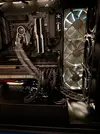
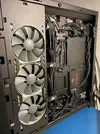
Questo un 5000D con radiatore frontale ed una 3080 FTW3
Spazio ce n’è ancora tanto e la 4090/4080 essendo più lunga verrebbe anche investita dal flusso diretto delle fan laterali nella zona terminale.
Se confermate sono due ottime notizie.Una buona nuova

Gli spikes questa volta saranno limitati, insomma non si dovrà più comprare un ali da 850w per una scheda da 450w (resto del sistema permettendo).
Cito:
NVIDIA claims that it has re-architected its VRM to offer superior transient voltage management. This is specifically to minimize the kind of spikes or excursions we've seen with previous-gen high-end graphics cards such as the RTX 3090 Ti and Radeon RX 6900 Series. These spikes often causes spontaneous shutdowns on some power supplies, even if they had a much higher wattage rating than required.
In the chart above, NVIDIA shows how current spikes get mitigated by their new VRM design, which uses a PID controller feedback loop. While the RTX 3090 bounces up and down, the RTX 4090 stays relatively stable, and just follows the general trend of the current loading pattern thanks to a 10x improvement in power management response time. It's also worth pointing out that the peak power current spike on the RTX 3090 is higher than the RTX 4090, even though the RTX 3090 is rated 100 W lower than the RTX 4090 (350 W vs 450 W).
Migliorata anche la dissipazione delle GDDR6x.
A special focus was put on memory temperature, which has been decreased by 10°C. In collaboration with Micron, NVIDIA selected memory chips fabricated on a new process, and all chips are 16 Gbit (density), which means they all fit on the same side of the PCB, so they can be cooled more effectively.
Ed Nvidia nel frattempo si smentisce da sola quando diceva che i 100/110° sulle GDDR6X erano “perfettamente normali”, specie sulle FE.

